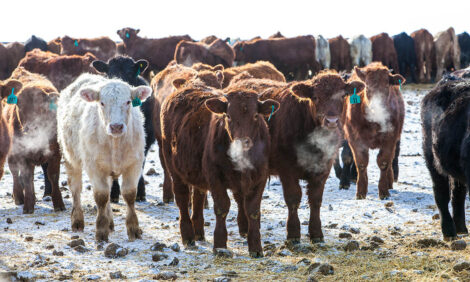



Tips for Cost Effective Calf Rearing
Weaning calves as quickly as possible may seem cheap but there can be some hidden longer-term costs, says Dr Bob James at Virginia Tech.Historically, the goal in raising calves has been to transform them into functioning ruminants as quickly as possible.
This meant feeding marginal quantities of milk to encourage calves to eat dry feed sooner.
It seemed logical that less money spent on milk or milk replacer and increased consumption of less expensive calf starter and forage was a win-win situation.
However, research and experience have shown that these practices are not biologically normal or profitable in the long run.
Extensive studies at universities and on dairies have confirmed that it may save money during the relatively short period when liquid diets are fed but has potentially detrimental impacts on long term productivity and health.
So what does it cost to raise a calf to weaning? Seventeen dairies in New York participate in an extensive record keeping program on replacement rearing costs (Karzes, 2013).
Every 5 years this data is summarised. In 2012 the total rearing costs during the first 8 weeks of life averaged nearly $6.50/day. Of this amount, nearly $3.75 could be attributed to feed cost.
“Investment” priorities for the pre-weaning period should be directed towards those expenses that offer the most return in growth and good health.
Feeding adequate amounts of a high quality liquid diet
Pre-weaned calves should receive at least 2 pounds of solids from milk or a high quality milk replacer. This amounts to at least 7 quarts per day and will cost $3.00 or more per day.
More liberally fed calves won’t consume much starter grain for the first 2-3 weeks of life, but should be eating 2–3 pounds per day at weaning around 6 to 8 weeks of age.
Limit feeding calves milk, milk replacer, or feeding a poor quality milk replacer may save money per calf per day. However, the calf uses more nutrients for maintenance functions with less available to support gain.
Calf growth per pound of body weight can get very expensive in these situations.
In addition, poor nutrition may result in greater health problems, particularly from respiratory disease as less nutrients are available to support immune function.
Labour efficient housing
The priority here is to keep calves dry. If their hair coats are wet, calves lose body heat more quickly which increases maintenance requirements, and decreases weight gain and nutrient efficiency of the gain.
Feeding milk fed calves is time consuming. Calf housing systems such as hutches are popular, but frequently are less labour efficient. The investment in properly engineered calf housing systems can promote good growth and a high degree of labour efficiency.
Thoroughly evaluate feed additives
Ask for published research to support the use of any additive in a calf diet. If testimonials or uncontrolled field trials are featured be careful.
Anticoccidial drugs, Ionophores and some fly control chemicals are probably the most cost effective. Ask: "Does the expected economic benefit of using the additive offset the additional expense?"
Feeding and managing the pre-weaned calf is expensive on a cost per day basis. However, the length of this segment in heifer management is short and the potential long term impacts on health, growth and long term profitability are high!



